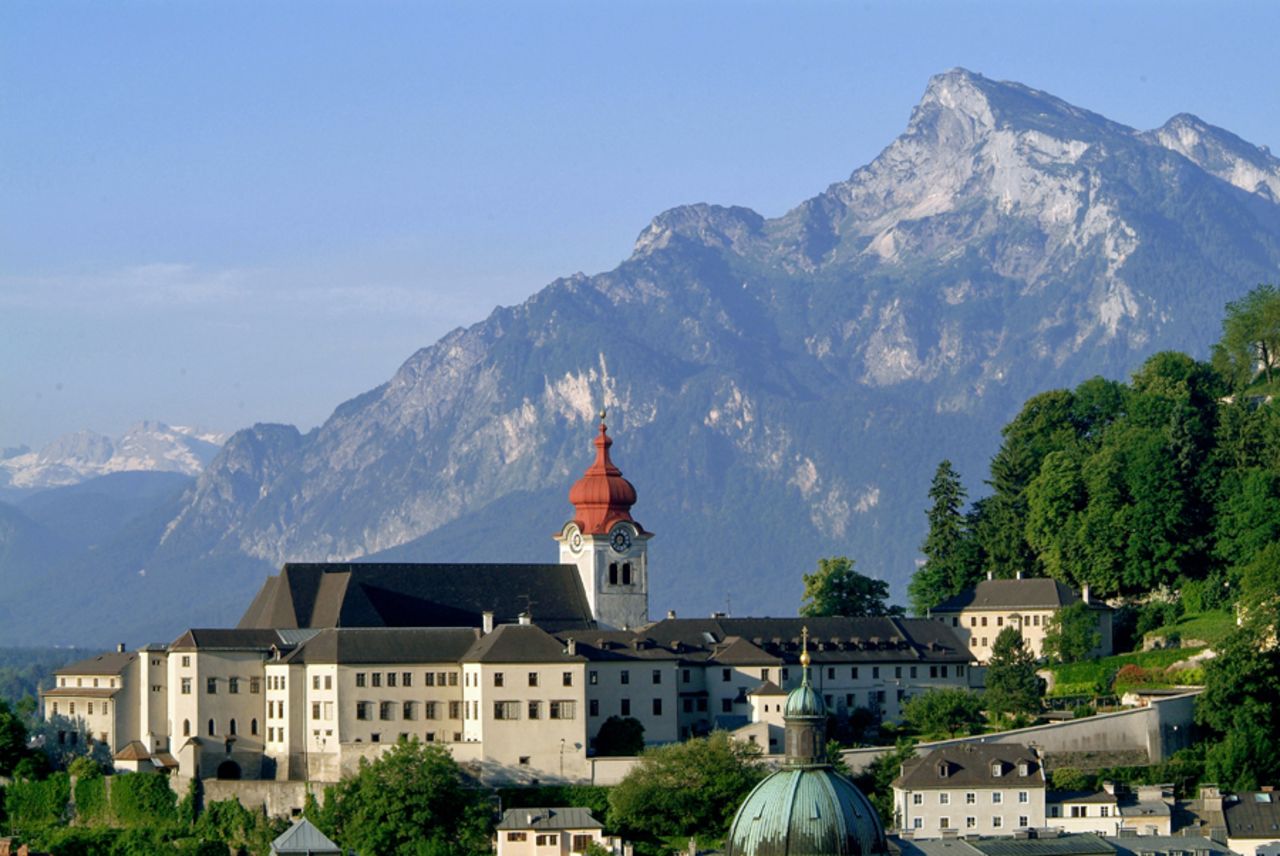
SALZBURG: THE SOUND OF MUSIC AND SILENCE
PLANNING FOR THE TRIP
When my college friend and I brainstormed places to travel this summer, we thought, “Let’s go to Salzburg, Austria and sing!” Both Sound of Music fans, we could already hear the songs as we planned our trip.
Vienna and Salzburg looked beautiful in the pictures: the elegant Baroque architecture and the medieval fortress looming over the evening skyline.
TRAVELING TO SALZBURG
Yet once we finally arrived in Salzburg for our long-awaited historical and Hollywood pilgrimage to “The Sound of Music” locations, I was surprised to hear the sound of silence.
The neighborhood and area surrounding the hotel where we stayed, in the New Town north of the Danube, seemed oddly quiet, almost uninhabited.
The streets were fairly empty in the daytime, save the occasional local passersby.
This is a place where past histories, present realities and timeless fantasies collide.
Multiple-layered perspectives emerge: the lived realities of the von Trapp family prior to the Anschluss; the literary lens of Maria von Trapp’s memoir
“The Story of the Trapp Family Singers,” the fictional characters and scenes from the film; the international travelers, like us, seeking enlightenment and nostalgia in some combination of reality and art.
Tourists and locals traverse Old Town and New Town encountering eras and ideologies worlds apart.
Medieval, baroque and contemporary architecture exist simultaneously alongside international stores and cuisines, Mozart concerts and “The Sound of Music” tours, while Fortress Hohensalzburg towers above and the salt mines beckon from below.
History and narrative exist as authentically located performances and displays to share with those who seek to experience the culture.
Yet beyond the façade and the tourism, the divide between Old and New seems ever widening as cultural heritage becomes a distant relic of the past.
FILM LOCATIONS IN THE SOUND OF MUSIC
In my search for the unifying narrative that I had experienced vicariously through my childhood and young adulthood, I instead discovered fragmentation both spatial and spiritual.
The various scene locations we sought during our scavenger hunt were scattered geographically throughout the city.
Tthe sights in Mirabell Gardens during the “Do-Re-Mi” montage, the Residenzplaz Square fountain from “I Have Confidence,” the front (Frohnburg) and back (Leopoldskron) of the von Trapp villa.
Movie magic also distorts and magnifies sizes and proportions: things like the Mona Lisa, Pegasus Fountain and the steps leading down to Mirabell Gardens are so small in real life!
Encountering the familiar scenes as they exist in reality is strange and otherworldly: storied edifices seem isolated from their (fictional music video) context and reassigned to an alien (to us) place.
THE STORY OF REAL FAMILY VILLA
More interesting, however, is the story of the real family villa, which now exists as a hotel.
The real villa, as shown in the recent 50th anniversary ABC special with Diane Sawyer, is a small and humble abode when compared with the grand staircase and the spacious frescoed drawing rooms seen in the movie.
The von Trapps became poor during the depression in the 1930s, and the family sang to earn extra money.
Captain von Trapp even considered performing for Hitler, though, as fabled, decided against it due to personal convictions.
Yet knowing the separation between the romanticized and real, the filmmakers wished not to produce a documentary, but to envision a tale that in its idealism would become immortalized, lasting through time and space.
In watching the movie now, after visiting the actual locations, there is a part of me that is a constant commentator drawing myself out of the illusion.
THE TIMELESS MEMORIES OF THE FILM
Yet there will always be a part of me that is moved to believe the story, and longs to relive the myth apart from history.
The reality and fantasy exist simultaneously within my mind: the timeless memories of the film from years past suspend my disbelief.
A question arises: does retreating into the comforts of familiar understandings – viewing the characters and the histories behind them as I always have, simplistically and idealistically – erase the eerie encounters with reality?
In privileging art over life, innocence over experience, I risk settling into an illusory contentment rather than navigating a more complex conception of the world.
And yet the film moves audiences in part because it is real, in the sense that it conjures genuine feeling whether contextualized within or decontextualized from actual historical experience.
The filmmakers were able to weave a coherent, compelling narrative, both literally and figuratively, spatially across the city and temporally in interpreting the family’s histories.
In reality, “The Sound of Music” coalesces with, conflicts with, or often does not coincide at all with contemporary Austrians’ experiences.
As with Manhattanites who have never visited the Statue of Liberty or Parisians who are indifferent to the Eiffel Tower, many Austrians have never even seen the movie before or visited each of the sights.
In a moment of rude awakening, our one-time Viennese waltz instructor told us, “The Sound of Music is trash.” (At least various versions of the Laendler, the Austrian folk dance, are real, as he told me.)
Instead of an idealized meeting, my attempts at communication and even temporary tourist assimilation represented a misplaced cultural encounter in which others are not as we have always known them to be, through script or storytelling.
Ultimately, whether through historical fact, imagination or re-appropriation, the film lives on as a message told through American ideals of optimism, family, patriotism, belonging, love, life and survival.
As the von Trapps journeyed from their Austrian homeland to America, many including me journey in the opposite direction to a place so romanticized as to be contained within an Edelweiss snow globe, and yet real as to draw audiences together through time and space into the music and the story.
The Salzburg of reality differs from the Salzburg of my imagination, yet visiting this unique Austrian city has inspired me with a deepened and more complicated sense of the world and of myself.